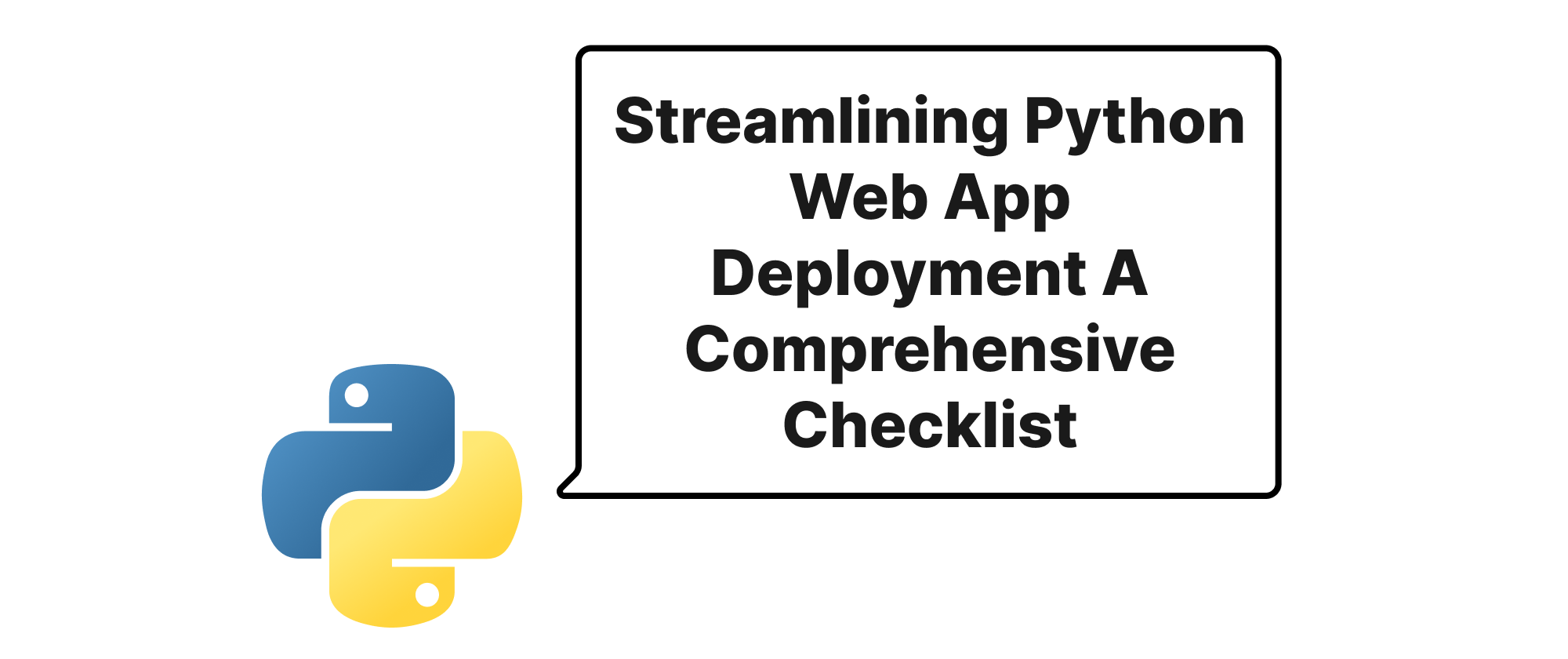Choosing the Right Gunicorn Worker for Your Python Web Application
Daniel Hayes
Full-Stack Engineer · Leapcell

Introduction
Building performant and scalable web applications in Python often involves a robust deployment strategy. While frameworks like Flask and Django provide the core logic, production deployments typically rely on a Web Server Gateway Interface (WSGI) HTTP server like Gunicorn. Gunicorn's strength lies in its ability to manage multiple worker processes, enabling your application to handle numerous concurrent requests effectively. However, Gunicorn isn't a one-size-fits-all solution, and a crucial decision point for developers is selecting the appropriate worker type. This choice directly impacts your application's concurrency model, resource utilization, and overall responsiveness. Understanding the nuances of Gunicorn's worker types – synchronous (sync), asynchronous with greenlets (gevent), and theASGI-compatible UvicornWorker – is paramount for optimizing your Python web application's performance.
Understanding Gunicorn Worker Mechanisms
Before diving into the specific worker types, let's briefly define some core concepts that underpin Gunicorn's operation and are central to understanding its worker models.
- WSGI (Web Server Gateway Interface): A standard Python interface between web servers and web applications. Gunicorn implements the server-side of WSGI, allowing it to run any WSGI-compliant application.
- ASGI (Asynchronous Server Gateway Interface): An evolution of WSGI designed to accommodate asynchronous web applications (e.g., websockets, long-polling). ASGI allows frameworks like FastAPI and Starlette to leverage
async/awaitsyntax. - Blocking I/O: Operations (like reading from a disk, making a network request) that halt the execution of the current thread or process until they complete. Traditional synchronous Python code often involves blocking I/O.
- Non-Blocking I/O: Operations that initiate an I/O request and immediately return control to the caller, allowing other tasks to be performed while the I/O operation is pending.
- Concurrency: The ability to handle multiple tasks seemingly at the same time. This can be achieved through true parallelism (multiple CPUs) or by rapidly switching between tasks (context switching).
- Greenlets (or Green Threads): Lightweight, cooperatively scheduled "threads" that run within a single operating system thread. They provide a form of concurrency without the overhead of OS threads, but rely on cooperative multitasking, meaning a greenlet must explicitly yield control for another greenlet to run.
Now, let's explore the worker types:
The sync Worker
The sync worker is Gunicorn's default and most straightforward worker type. Each sync worker process handles requests one at a time, in a blocking fashion.
Principle and Implementation:
When a sync worker receives a request, it processes that request entirely from start to finish. If the request involves any blocking I/O operations (e.g., database queries, external API calls), the worker process will pause and wait for that operation to complete before it can process the next line of code or attend to another request.
Example Usage:
To use sync workers, you often don't need to specify it explicitly, as it's the default. However, you can explicitly set it:
gunicorn --workers 4 --worker-class sync myapp:app
Scenario: Suppose you have a simple Flask application:
# myapp.py from flask import Flask import time app = Flask(__name__) @app.route('/') def hello(): time.sleep(0.5) # Simulate a blocking I/O operation return "Hello, Sync World!" if __name__ == '__main__': app.run()
If you run this with gunicorn --workers 1 myapp:app, and two requests arrive simultaneously, the second request will have to wait for the first request's 0.5-second time.sleep to complete before it even starts processing. To handle more concurrent requests, you'd increase the number of sync workers. However, each worker consumes its own set of OS resources (memory, CPU), leading to potential scalability limits.
Pros:
- Simple and easy to understand.
- Good for CPU-bound tasks where I/O is minimal.
- Stable and widely compatible with most WSGI applications.
Cons:
- Poorly suited for I/O-bound applications, as blocking I/O will starve the worker process, leading to low concurrency per worker.
- Can consume significant memory and CPU resources if many workers are spawned for high concurrency, as each is a separate OS process.
The gevent Worker
The gevent worker leverages greenlets and cooperative multitasking to achieve high concurrency within a single worker process, drastically improving performance for I/O-bound applications.
Principle and Implementation:
The gevent library patches standard Python blocking I/O functions (like socket, time.sleep, etc.) to become non-blocking. When a gevent worker encounters a patched blocking I/O call, instead of waiting, it yields control to the gevent event loop. The event loop then switches to another greenlet (another request or task) that is ready to run. Once the original I/O operation completes, the event loop can switch back to the original greenlet. This allows a single gevent worker OS process to efficiently manage thousands of concurrent I/O operations.
Example Usage:
First, ensure gevent is installed (pip install gevent). Then, specify the worker class:
gunicorn --workers 2 --worker-class gevent myapp:app
Scenario:
Consider the same Flask application as above, with the time.sleep(0.5).
If you run this with gunicorn --workers 1 --worker-class gevent myapp:app, because time.sleep is patched by gevent, when the first request hits time.sleep(0.5), the greenlet yields control. The gevent worker can then immediately switch to processing the second incoming request. Both requests appear to be handled concurrently by a single OS process, significantly increasing throughput for I/O-bound tasks compared to a sync worker. Your myapp.py code doesn't need to change.
Pros:
- Excellent for I/O-bound applications, enabling very high concurrency with fewer OS processes.
- Lower resource consumption (especially memory) compared to an equivalent number of
syncworkers for high concurrency. - Code typically remains synchronous-looking, as
geventhandles the non-blocking aspects transparently.
Cons:
- Requires monkey patching, which can sometimes lead to obscure bugs or incompatibility with libraries that don't respect
gevent's patching. - Not suitable for CPU-bound tasks; if a greenlet hogs the CPU, it won't yield, blocking other greenlets within the same worker.
- Debugging can be more complex due to the cooperative multitasking nature.
The uvicorn.workers.UvicornWorker
This worker type is specifically designed to serve ASGI (Asynchronous Server Gateway Interface) applications, bringing native async/await support to Gunicorn. It essentially integrates the Uvicorn ASGI server as a Gunicorn worker.
Principle and Implementation:
ASGI applications, built with frameworks like FastAPI, Starlette, or Quart, are inherently designed around async/await syntax and non-blocking I/O. The UvicornWorker allows Gunicorn to manage instances of the Uvicorn server, each running an ASGI application. Uvicorn itself uses asyncio (Python's built-in asynchronous I/O framework) and typically runs on an event loop (like uvloop for better performance) to handle concurrent requests efficiently. Each UvicornWorker manages its own asyncio event loop and serves multiple concurrent asynchronous requests within a single process.
Example Usage:
First, install Uvicorn (pip install uvicorn). Then, specify the worker class:
gunicorn --workers 2 --worker-class uvicorn.workers.UvicornWorker myasgi_app:app
Scenario: Consider a FastAPI application:
# myasgi_app.py from fastapi import FastAPI import asyncio app = FastAPI() @app.get("/") async def read_root(): await asyncio.sleep(0.5) # Simulate an async I/O operation return {"message": "Hello, Async World!"}
If you run this with gunicorn --workers 1 --worker-class uvicorn.workers.UvicornWorker myasgi_app:app, and multiple requests arrive, the asyncio.sleep(0.5) function (an await call) implicitly yields control to the event loop. The UvicornWorker can then switch to processing other incoming requests or resuming other await tasks that have completed their I/O. This provides true asynchronous concurrency specifically for applications written with async/await.
Pros:
- Native support for ASGI applications, making it the ideal choice for frameworks like FastAPI, Starlette, and Quart.
- Excellent performance for I/O-bound tasks in
async/awaitcode. - Leverages Python's modern
asynciocapabilities. - No monkey patching involved, leading to more predictable behavior.
Cons:
- Requires your application to be written using the
async/awaitparadigm and be ASGI-compliant. - Not suitable for traditional WSGI applications without wrapping them (though it's possible, it's generally better to use
syncorgeventfor WSGI). - Like
gevent, heavy CPU-bound tasks within anawaitfunction can block the event loop within that worker.
Conclusion
The choice of Gunicorn worker type hinges directly on your application's architecture and its primary workload characteristics. For traditional WSGI applications with minimal I/O or purely CPU-bound tasks, the simplicity and robustness of the sync worker are often sufficient, scaled by the number of CPU cores. For I/O-bound WSGI applications seeking high concurrency with fewer resources, gevent offers a powerful solution by transparently introducing cooperative multitasking. Finally, for modern asynchronous Python applications built using frameworks like FastAPI, UvicornWorker is the definitive choice, providing native ASGI support and leveraging asyncio for optimal asynchronous performance. Selecting the correct worker type is a critical step in building a scalable and efficient Python web service.


